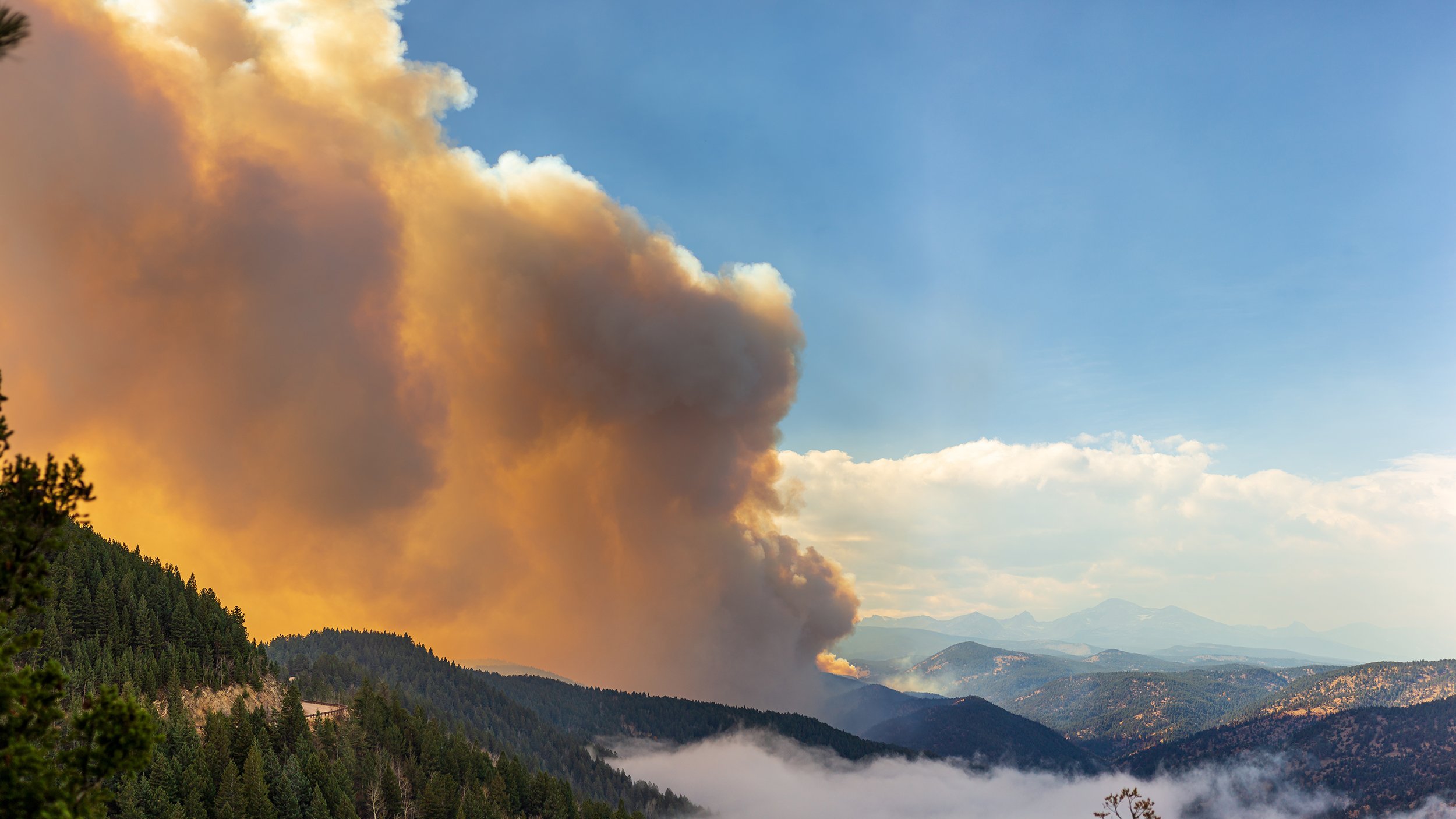Fire Mitigation Strategies to Protect Your Home

Wildfires are a growing threat to homeowners across the western United States. With unpredictable weather patterns and an increase in dry conditions, fire preparedness is no longer optional — it’s essential.
The key to protecting your home is proactive care. By using fire mitigation strategies, you can fortify your home against wildfires and give yourself true peace of mind.
Creating Defensible Space Around Your Home
One of the most effective ways to protect your home from wildfires is by creating defensible space — a buffer zone designed to slow the spread of fire and improve the effectiveness of firefighting efforts. This involves strategic landscaping, clearing out flammable materials, and maintaining a safe perimeter.
The Immediate Home Perimeter (0–5 Feet)
The first five feet surrounding your home is the most critical area for fire defense. Keeping this space clear of dry leaves, pine needles, and combustible materials such as firewood, outdoor furniture, or decorative mulch can make a significant difference. Instead, opt for non-flammable landscaping elements like gravel, stone, or well-watered ground cover.
The Extended Perimeter (5–30 Feet)
Beyond the immediate home perimeter, homeowners should focus on spacing out trees and shrubs to prevent flames from easily jumping between them. Tree branches should be trimmed at least ten feet away from the house and pruned six feet off the ground. Regularly clearing out dead vegetation, maintaining a well-irrigated lawn, and incorporating natural firebreaks such as stone pathways or driveways can further help slow the spread of fire.
The Outer Defensible Zone (30–100 Feet)
For properties with larger yards, extending fire mitigation efforts beyond 30 feet from the home adds another layer of protection. This means thinning out densely packed trees, removing highly flammable vegetation, and keeping storage areas, propane tanks, and other combustibles at a safe distance.
Using Fire-Resistant Building Materials
While defensible space is essential, the materials used in your home’s construction also play a crucial role in fire safety. Certain materials are significantly more resistant to heat and flames, offering better protection during a wildfire.
Roofing & Siding
A home’s roof is particularly vulnerable to embers, which can travel long distances during a fire. Opting for fire-resistant materials like metal, slate, tile, or Class A-rated composite shingles can help prevent ignition. Likewise, exterior walls should be constructed from non-combustible materials such as stucco, fiber cement, brick, or stone, rather than untreated wood.
Windows & Doors
Windows and doors are also weak points in fire defense. Dual-pane, tempered glass windows are far more resistant to heat exposure than single-pane glass, reducing the risk of breakage and fire penetration. Meanwhile, solid core or metal doors provide better fire resistance compared to hollow-core doors.
Vents & Openings
Other small but important improvements include screening attic and crawl space vents with 1/8-inch metal mesh to prevent embers from entering, sealing gaps around windows and eaves, and installing spark arresters on chimneys to reduce the risk of embers escaping.
The Importance of Ongoing Home Maintenance
Wildfire mitigation isn’t a one-time task — it requires consistent upkeep. Regular home maintenance helps minimize fire risks, and small seasonal tasks can make a big difference.
Regular Inspections & Cleaning
Keeping gutters and roofs clear of dry leaves and debris is essential, as accumulated material can easily ignite from airborne embers. Homeowners should also inspect vents, siding, and roofing for any vulnerabilities where embers might enter. If trees are present near the home, branches should be trimmed regularly, and dead limbs should be removed to reduce potential fuel sources.
Fire-Safe Landscaping
Landscaping choices can further impact fire safety. Fire-resistant plants — such as aspen, maple, and certain perennials — are less likely to ignite than high-resin shrubs like junipers and pines. Keeping lawns green and well-watered also reduces the chance of a fire spreading. Strategic use of firebreaks, such as stone retaining walls, paved pathways, and gravel beds, can further slow down flames and protect structures.
Evacuation Planning
Every household should have a clear evacuation plan with at least two escape routes. Practicing evacuation drills can ensure that everyone knows what to do in an emergency.
Assembling an Emergency Kit
A wildfire emergency kit should be readily accessible and stocked with essentials, including:
Important documents (insurance policies, identification, home inventory)
Prescription medications and medical supplies
Non-perishable food and bottled water
First-aid supplies and an N95 mask for smoke protection
Staying Informed
Conditions can change rapidly during a wildfire, so signing up for local fire alerts and emergency notifications is crucial. Monitoring evacuation notices and fire weather warnings allows homeowners to act quickly if evacuation becomes necessary.
How Willow Can Help Protect Your Home
Fire mitigation requires ongoing effort and expertise, and many homeowners don’t have the time or resources to manage every detail on their own. That’s where Willow comes in.
Our home concierge services are designed to take a proactive approach to fire prevention, ensuring that your home is as protected as possible. We create customized fire mitigation plans tailored to your property’s unique layout and risk factors. Our team coordinates seasonal maintenance tasks like:
Clearing gutters
Trimming trees
Maintaining defensible space
We also work with trusted local vendors to facilitate home upgrades, such as installing fire-resistant roofing, vents, and landscaping improvements.
Wildfires are unpredictable, but preparation doesn’t have to be. With Willow managing your home’s fire safety, you can have peace of mind knowing that the necessary precautions are in place.
Wildfire Mitigation in Boulder
If you’re ready to enhance your home’s fire resilience, contact Willow today to learn more about our comprehensive fire mitigation services.
Willow is a luxury home concierge service based in Boulder, Colorado. We care about your home and giving you back your time to do the things you care about most.
How it Works



